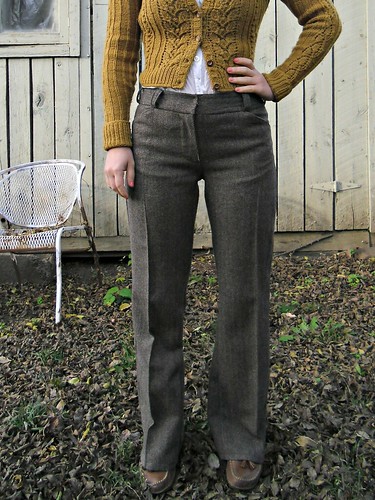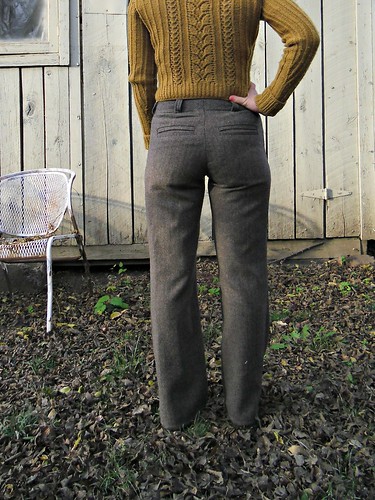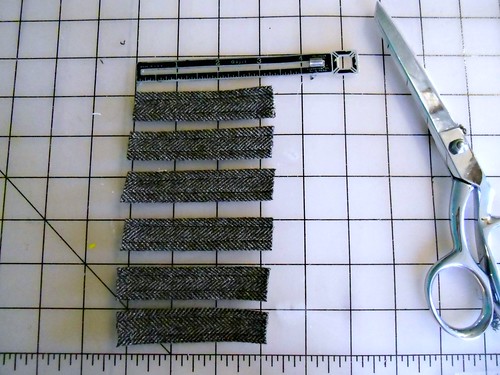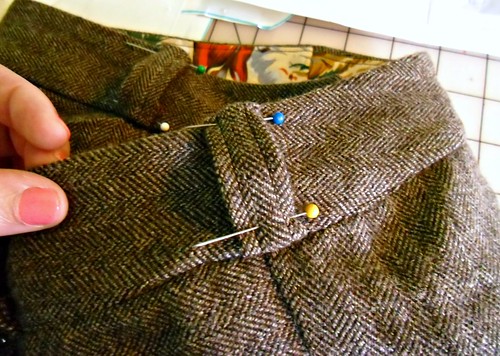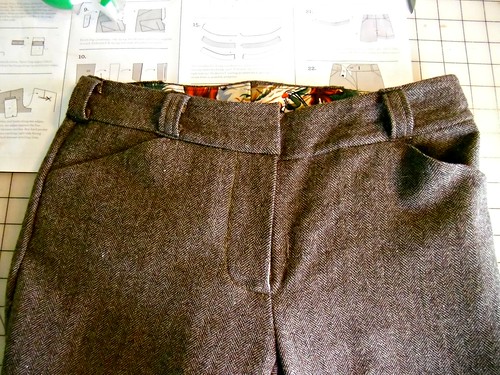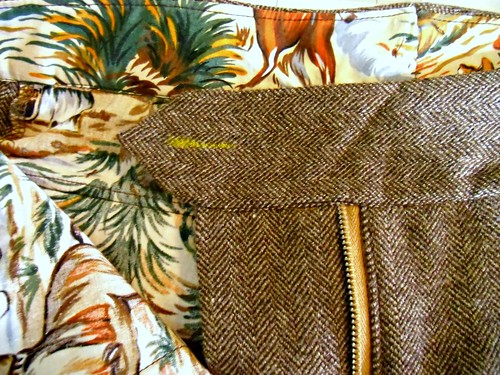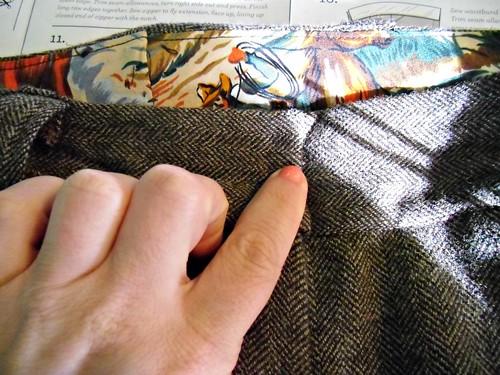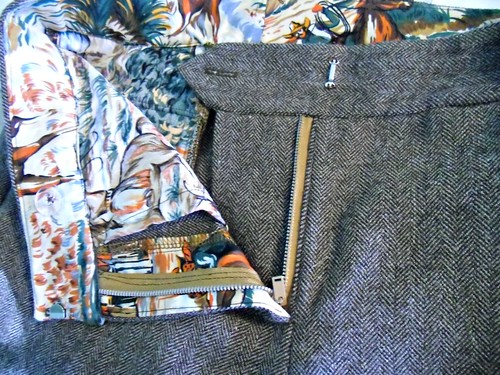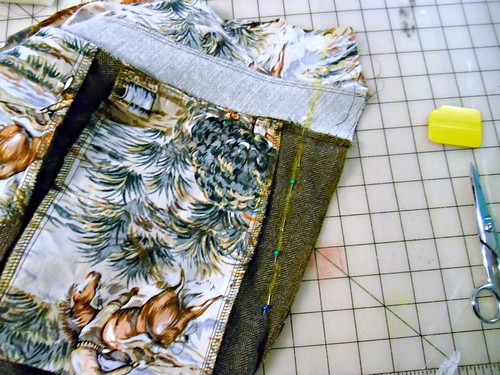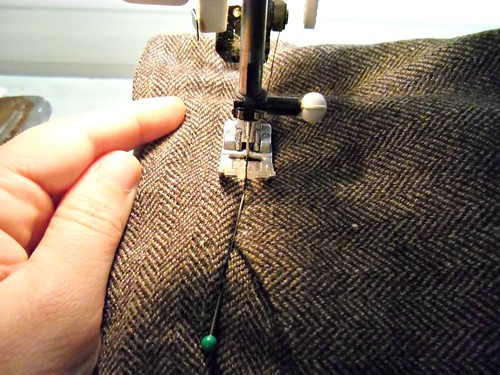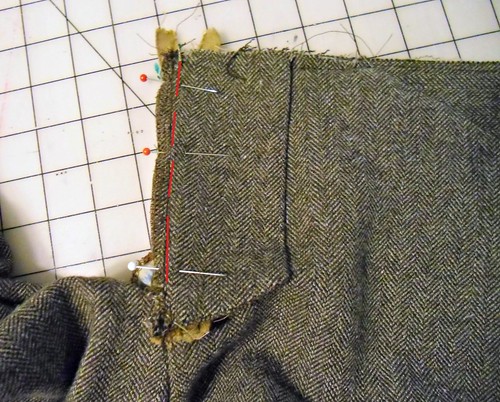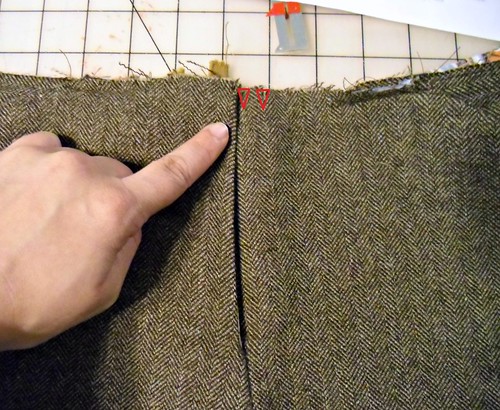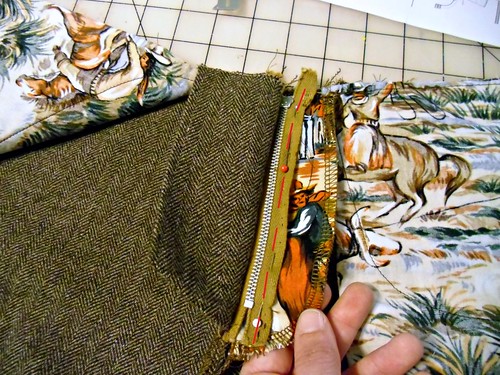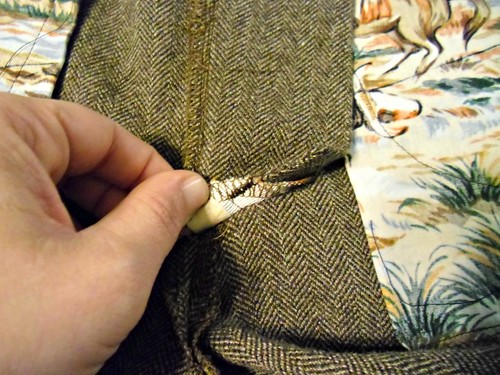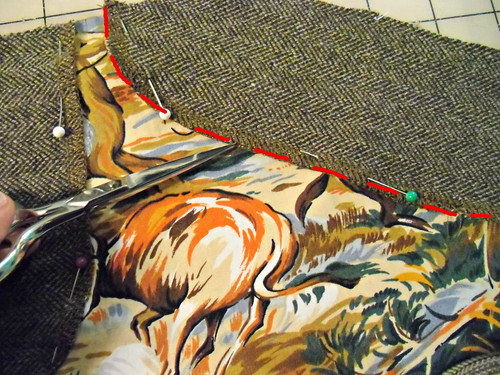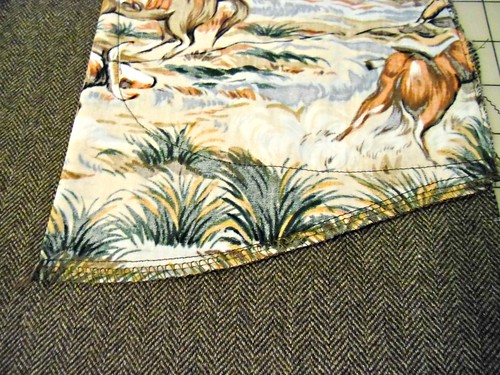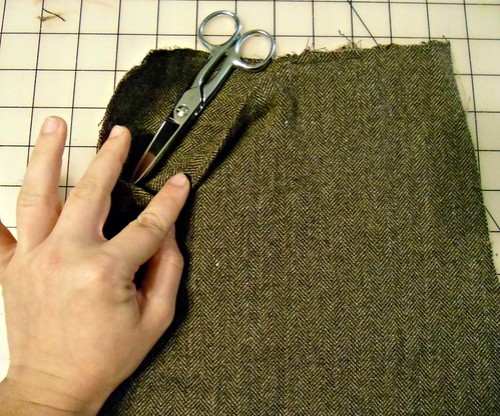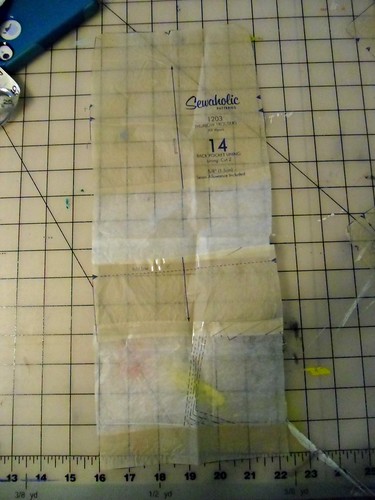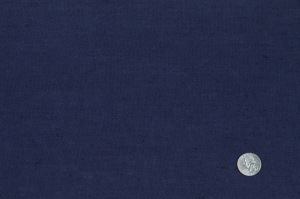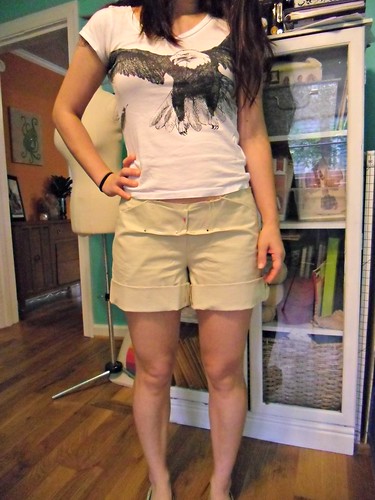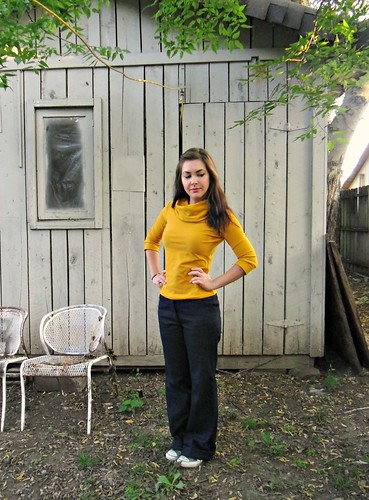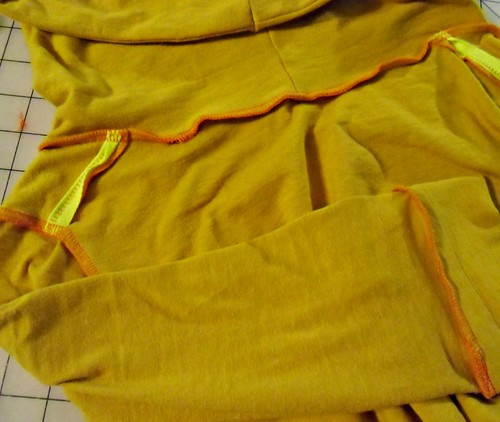Moving on to the next part of our sew-along – the Dreaded Double-Welt Pockets
 \
\
AHHHHHHHHHHH!!!
I will admit, this part gave me some serious hair-pulling when I first attempted it because the instructions run on the sparse side. Don’t worry, though – I took LOTS of pictures and even ran a few through my beloved Microsoft Paint, so hopefully y’alls first attempts will be a much smoother process 🙂 The procedure itself it fairly simple, it’s just very precise. If the idea of welts is still terrifying – make a test welt pocket on some of your leftover scraps! No shame!!

Today we will be sewing steps 4-6.
Before you do ANYTHING with these pieces, take a moment to ensure that you have transferred all your pattern markings and notches to the fabric pieces. Like I said, welts are very precise, so the markings for this step are pretty critical. With that being said, the slash lines for the welt pocket should be transferred to the right side of your pieces; everything else should go on the wrong side.
If you have not already done so, go ahead and sew up your back darts and press them toward the center back (or, as Tasia writes: “centre.” Ehhheheehehe how cute, I wish I was Canadian sometimes lol)

Take your back pocket facing (piece 13) and finish the long edges with your preferred method of seam finishing.

Place the facing on the back pocket lining (14), both with right sides up, matching the notches. It took me a bit of head-scratching to figure this part out – see how the notches aren’t exactly centered on the sides of the facing, but rather creep up in one direction? The notches should be closest to the top of the lining (the end with the single notch). It’s hard to explain this without the ability to flail my arms around, so hopefully this picture makes a bit of sense!
You are going to edgestitch this piece down, in the same manner that you edgestitched the front pocket facings. Again, this piece’s job is to act as a little curtain for your welt pocket windows.

Speaking of welts… take your interfaced welt pieces and fold them in half, wrong sides together. Press and baste the long edges closed.
IT IS TIME.

The welts start out on the right side of your back trouser pieces (so yeah, I sure hope you transferred that marking to the right side!). The welt gets placed along the pocket line, with the raw (ie, non-folded) edge just exactly butting up against it.

Here it is with both welts pinned down. I highlighted my pocket line in pink so you can see exactly where it is.

There should be a notch at either end of both welt pieces. These indicate where you will start and stop stitching.
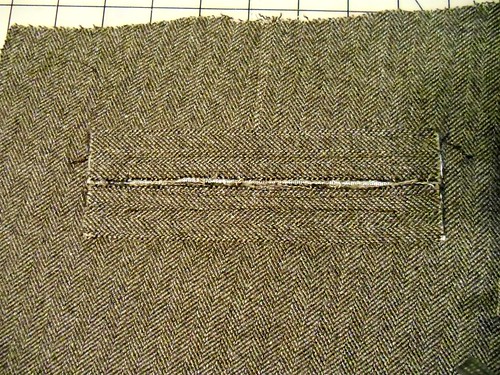
Stitch down the center(e) of each welt, starting at one notch and ending at the second. Don’t forget to backstitch!

Grab your pocket lining, and place it face down, upside-down over the bottom welt, matching the raw edges. Sew the lining to the welt only, being careful not to catch the pants back in your stitches.
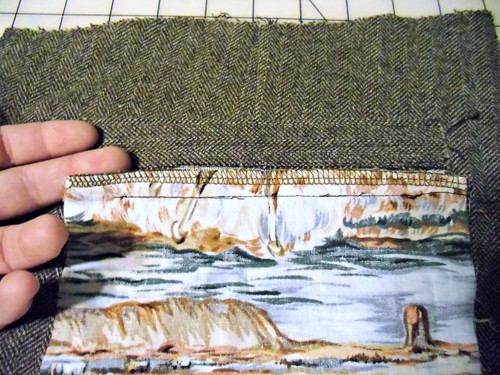
Finish the raw edge.

Ok, time to cut into those pants and set the welts free! Cut straight down your slash line (disregard that it looks like someone chewed on mine!), stopping about 1/4″ from the end of your stitching lines. From the end of your cutting line (the marked X) to the end of your stitching line (circled), you want to cut at an angle, connecting the two.
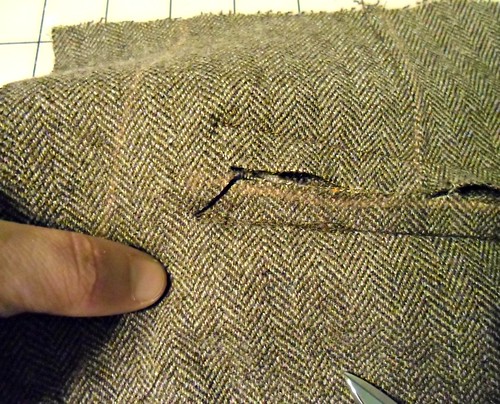
Here is a better picture. Be careful not to cut too far, but don’t be timid and not cut deep enough – you want to end exactly at the stitching line. This would be a good time to practice on those scraps 🙂
Do this to both welt pockets, top and bottom, on either end.

Grab your pocket lining and pull it through the hole until it’s on the wrong side of your pants back.

I like to give my welts a quick press at this point, just to make sure I’ve clipped far enough and that everything is looking good so far.
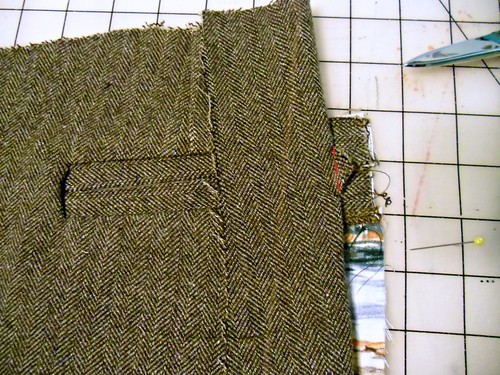
Flip the pants back over, right side facing up. Fold over one side to expose the end of the welts. See the little triangle there? We are going to stitch that down to the welts, exactly on the indicated stitching line.

When sewing the triangle down, a few things to keep in mind: keep the welts butted together. You can hand-baste the welts closed if you are having trouble with this. Also, you want to get as close to the edge as possible, without actually catching non-triangle fabric. Use a zipper foot, and hand-baste the triangle in place before you start sewing, to ensure that it won’t move when you’re at the machine.


Now take that bad boy over to the iron & give ‘er a good press!!
See? Hard part over! Now to turn those welts into pockets and not ass-windows.

Pull the top (aka, notched end) of the lining toward the top of your pants back, folding at the fold line. All the right sides should be encased in the pocket and you should be looking at the wrong side of the fabric.

See the top welt stitching line? We are going to sew right on top of the welt only, to make sure that our pocket doesn’t have secret back fat pocket space.

Be sure to catch only the welt & the lining. Again – the pants back isn’t invited to this party! SORRY.

Now sew up the sides of your pocket, and finish the edges.

Then baste the top of the pocket lining to the pants back.
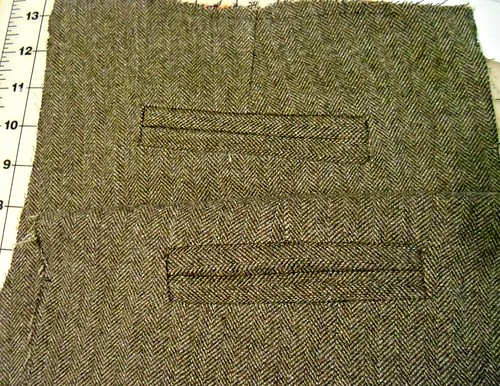
Ta da! Beautiful, functional, double-welt pockets!
Now that wasn’t so hard, was it? 🙂
If you’re caught up to speed, go ahead & complete steps 7 & 8. Next week: the fly & all it’s fly-glory, woohoo.
Tags: Thurlow Sewalong, tutorial, Welt pockets



